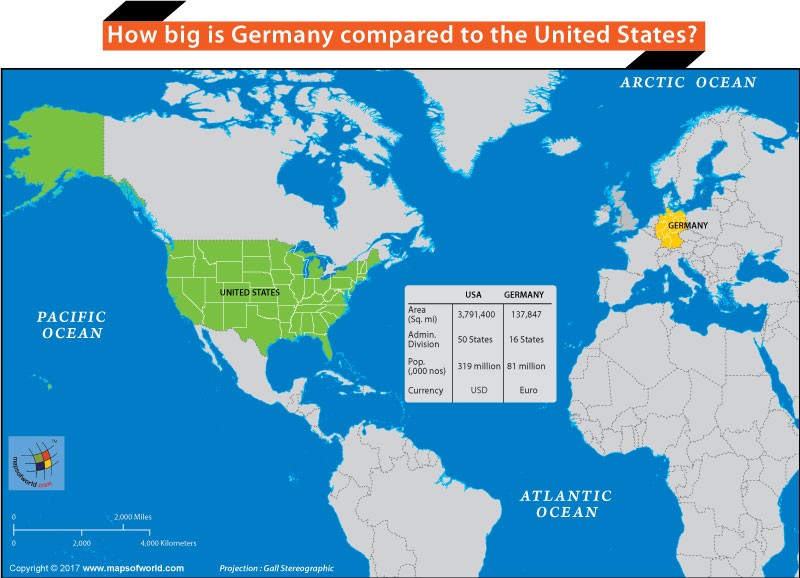Germany and the United States are two of the world’s most influential nations, boasting significant economic and political power. When considering their geographical dimensions, however, a stark contrast emerges. The size of Germany compared to the United States reveals a considerable difference, highlighting the vastness of the American landscape relative to its European counterpart.
Germany, a central European country, covers an area of approximately 137,847 square miles (357,022 square kilometers). In contrast, the United States, spanning across North America, is significantly larger, encompassing around 3,791,400 square miles (9,819,420 square kilometers). This means the United States is roughly 28 times larger than Germany in terms of total area. To put it in perspective, for every square mile in Germany, there are approximately 28 square miles in the United States.
 World Map Germany Compared to the United States
World Map Germany Compared to the United States
Visualizing the Size Difference
Understanding the sheer scale of this difference can be challenging with just numbers. Comparing Germany to individual US states provides a more tangible visualization. For example, Germany is comparable in size to the state of Montana, which is slightly larger, and New Mexico, which is a bit smaller. Another compelling comparison is with California. Germany occupies about 85% of the area of California alone, a state known for its substantial size within the US. Imagine placing Germany on a map of California; it would stretch roughly from Los Angeles in the south to Redding in the northern part of the state, offering a clear picture of its dimensions relative to a single US state.
Population and Density
Beyond landmass, population is another key factor in understanding a nation’s scale. While the United States dwarfs Germany in area, it also has a significantly larger population. The United States is home to approximately 330 million people, whereas Germany’s population is around 83 million. Despite being much smaller geographically, Germany’s population density is considerably higher than that of the United States. This means that while the US has a larger overall population, Germany has more people living in a smaller area.
Economic and Historical Context
Both Germany and the United States are global economic powerhouses. Germany boasts Europe’s largest economy and is a crucial member of the European Union. The United States holds the title of the world’s largest economy. Historically, Germany’s 20th century was marked by significant events, including its division after World War II into West and East Germany, before reunification in 1990. The United States, with its vast territory and resources, has steadily grown into a global superpower over centuries.
In conclusion, when considering the size of Germany compared to the United States, the difference is substantial. The United States is a significantly larger nation in terms of land area, approximately 28 times the size of Germany. While both are powerful countries on the world stage, their geographical scales and population distributions offer distinct characteristics that contribute to their unique global roles.